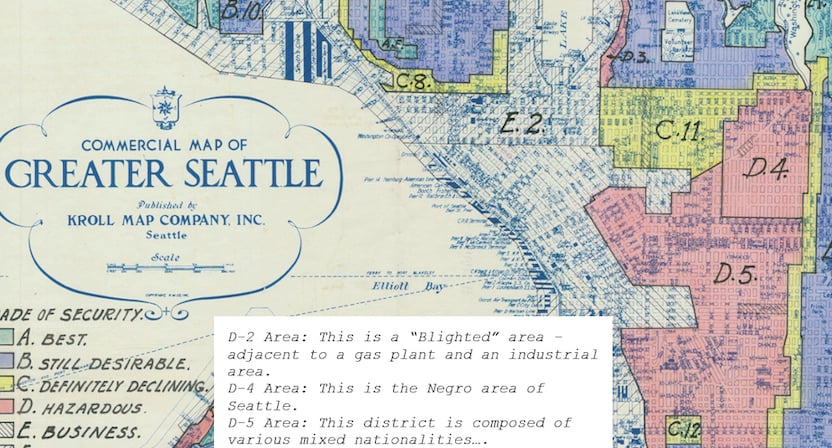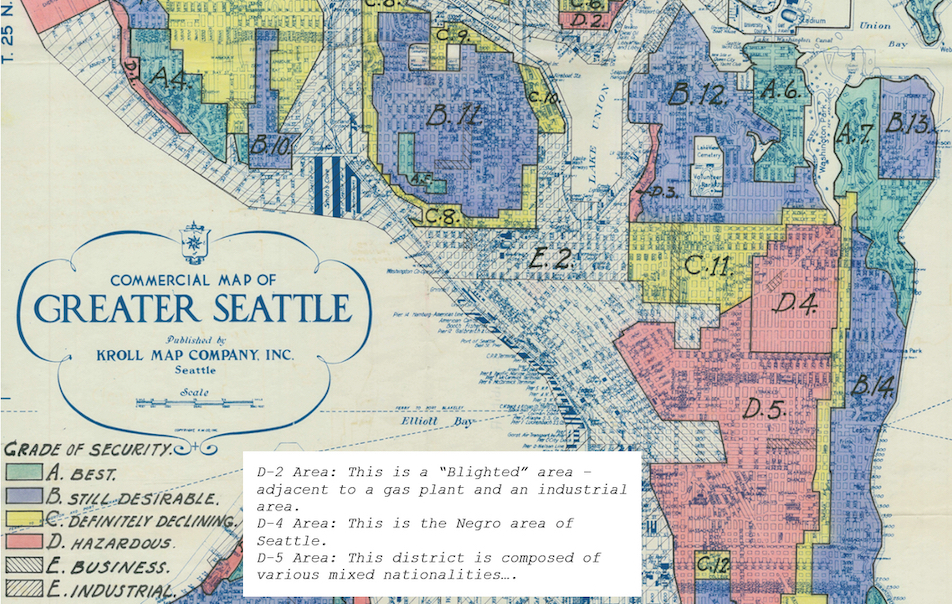Blockbusting and the Five R’s in Racist Real Estate Practices
Introduction
Racism in real estate is a pervasive issue that harms our society.
The CHOP, or Capitol Hill Organized Protest (zone), lasted officially from June 8 to July 1, 2020. Even so, protests continued for months through at least December 2020. While adverse activities including looting resulted, the CHOP movement demonstrated the demand and need for racial equality and justice.
The real estate industry has played an active role in fostering racism in the United States. Before we can move forward, the industry must recognize the harm it has inflicted on Black people, Jews and other minority groups.
In this article, we take a look at blockbusting and the five R’s of racist real estate practices. Together, these six kinds of institutional racism have shaped our neighborhoods and society in Seattle and around the United States.
Blockbusting
This lucrative practice involves encouraging white homeowners to sell by making them believe that racial minorities are moving into the neighborhood. A real estate agent or developer might, for example, hire a black woman to stroll down the street with a baby carriage. The pitch is then made to white homeowners that racial minorities will drive down prices. The agent or developer then buys homes at low cost and sells to minorities at a higher price.
Redlining
Redlining is the denial of services based on location. A particularly common form of redlining is the rejection of mortgages for homes in minority neighborhoods. The word redlining comes from the practice of outlining neighborhoods characterized as financially risky in red. Common from the 1930s to the mid-1970s, redlining continues to make headlines to this day.
Racial Steering
Guiding clients to or away from specific neighborhoods on the basis of race is known as racial steering. This practice has further increased racial segregation in the United States. Civil rights acts enacted in the 1860s and 1870s had little effect in combating racial steering or other racist practices. Finally, the Fair Housing Act of 1968 made it possible for victims to seek compensation for racial steering.
Racial Disinvestment
This “R” refers to withholding investment in an area based on race. In Seattle, a 1974 study showed that most banks had failed to make even a single loan to redlined areas over the previous four years even though redlining had been made illegal. This is a point often overlooked when considering how racism has affected society.
Racial Covenants
When purchasing a home, a covenant attached to the property may restrict home ownership. Such racial covenants often exclude certain racial or religious minorities from future ownership. The use of racial covenants arose in response to a 1917 Supreme Court outlawing racial residency statutes. These racial covenants remain on many home titles to this day. In 2018, a Washington State law passed allowing homeowners to strike such covenants from their home titles.
Reverse Redlining
A practice of targeting minorities with offers of mortgages and other financial products that incur a higher interest rate or are otherwise inferior to products offered to white people. Common in the 2000s. This last example shows how pervasive these racist practices are.
For more than 75 years, RJRE has supported equality for all. Together we can make the world a better place.
Other sources and further reading:
- Map and selected D area descriptions: Home Owners’ Loan Corporation, Home Owners’ Loan Corporation Security Map and Area Descriptions, January 10, 1936, Security Map and p 6
- Brentin Mock, Mapping the Continuing Culture of Disinvestment in Baltimore’s Black Neighborhoods, November 18, 2015
- Catherine Silva, Racial Restrictive Covenants History, 2009
- Central Seattle Community Council Federation, Redlining and Disinvestment in Central Seattle: How the Banks are Destroying our Neighborhoods, July 1975 [PDF]
- FreeCapitolHill, The Demands of the Collective Black Voices at Free Capitol Hill to the Government of Seattle, Washington, June 9, 2020
- Khristopher J Brooks, Redlining’s legacy: Maps are gone, but the problem hasn’t disappeared, June 12, 2020
- Patrick Rucker, Trump Financial Regulator Quietly Shelved Discrimination Probes Into Bank of America and Other Lenders, July 3, 2020
- Seattle Municipal Archives, Redlining in Seattle, [undated]
- Sydney Brownstone and Mike Carter, Seattle Times, Protesters barricade Cal Anderson Park in Seattle to stop homeless encampment’s removal by city, updated December 24, 2020
- Tim Hill (compiler), Redlining Notebook, 1975–1977
- Tunde Wey, Detroit’s Divided Renaissance, November 20, 2017
- Wikipedia articles: Exclusionary Zoning, Civil Rights Act of 1968


